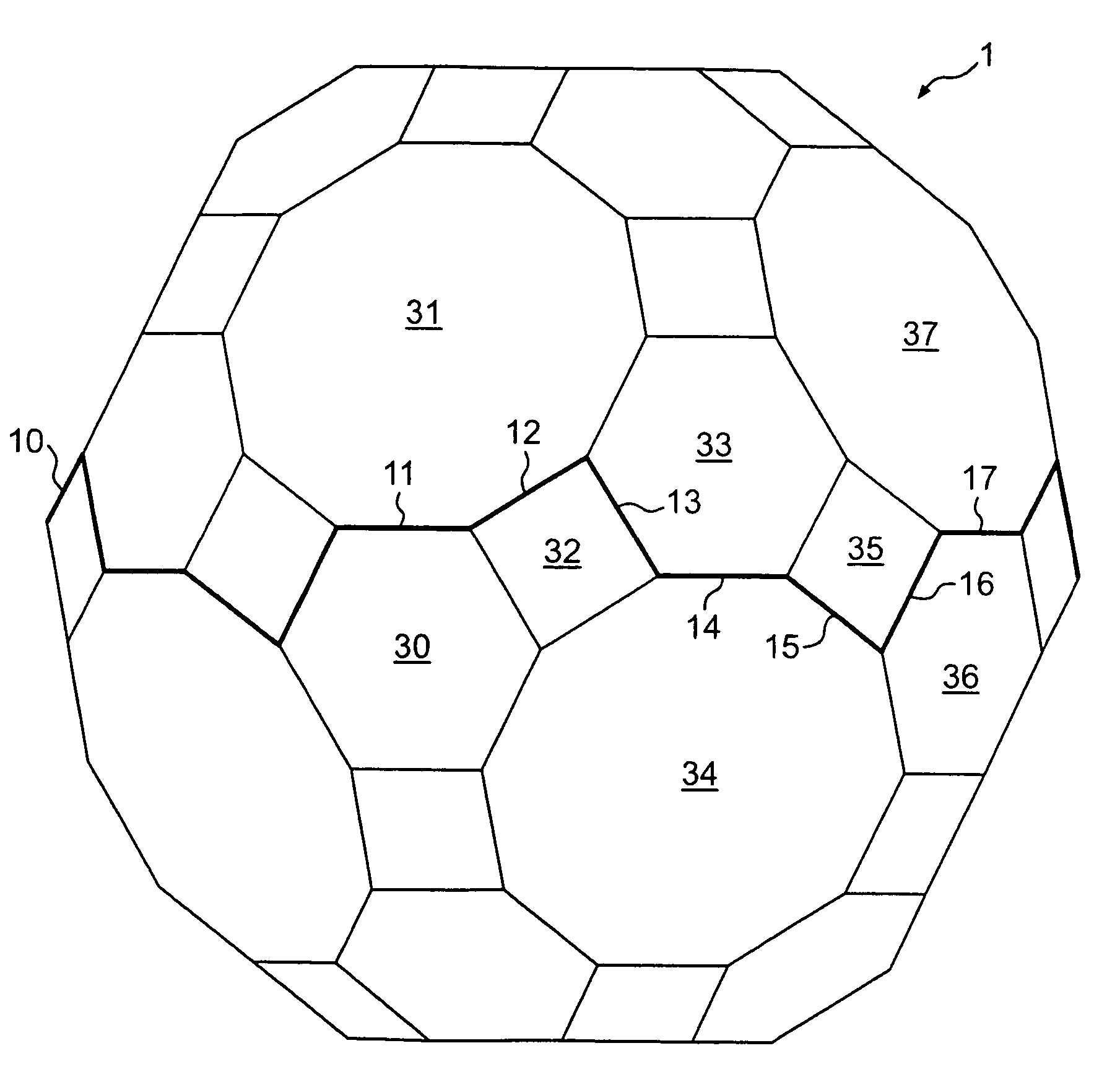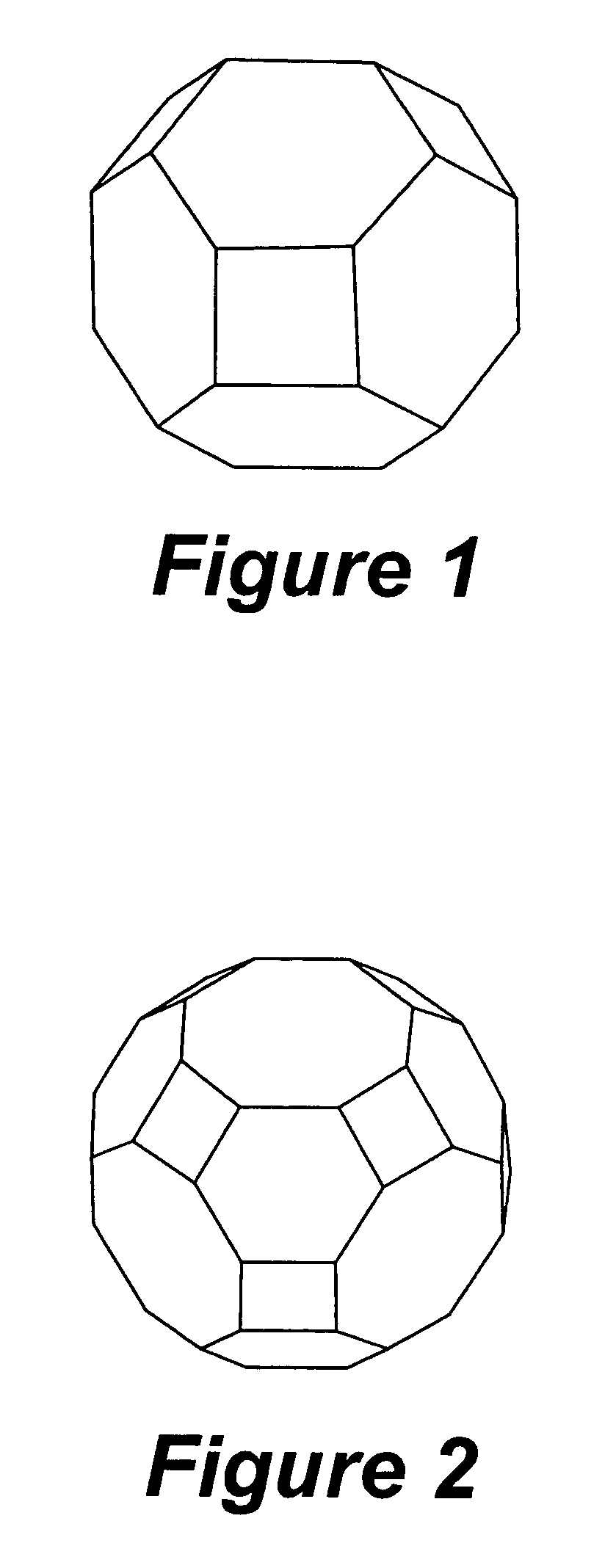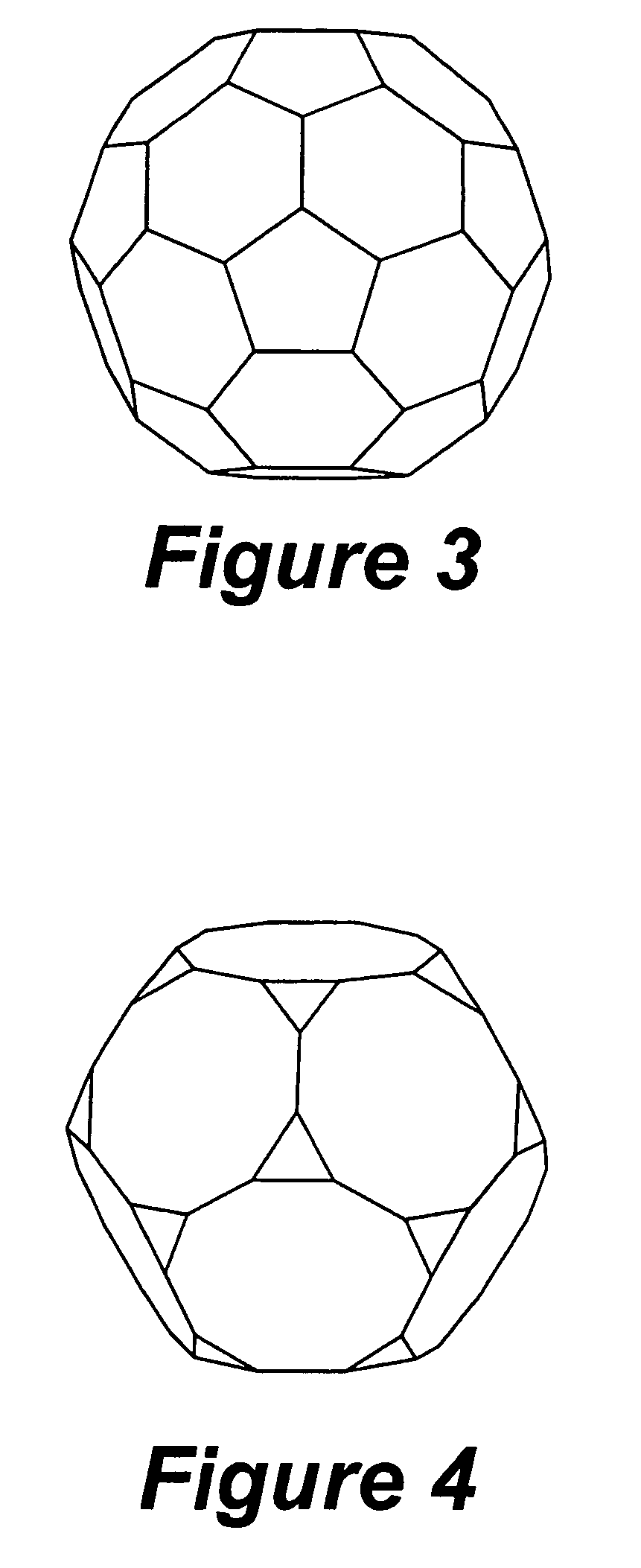Dimple patterns for golf balls
a golf ball and dimple technology, applied in the field of golf balls, can solve the problems of increasing the difficulty of removing the ball from the mold, the design requires substantial undercuts, and the aerodynamic performance of the ball is not improved in the space, so as to achieve the effect of minimizing any undercu
- Summary
- Abstract
- Description
- Claims
- Application Information
AI Technical Summary
Benefits of technology
Problems solved by technology
Method used
Image
Examples
Embodiment Construction
[0025]FIGS. 1–5 show Archimedean solids. An Archimedean solid is a semi-regular convex polyhedron with regular polygon faces. Semi-regular means that Archimedean solids have uniform vertices, but not uniform faces. FIG. 1 shows a truncated octahedron. The truncated octahedron has 14 faces and 28 vertices. FIG. 2 shows a great rhombcuboctahedron, also known as a rhombitrucated cubeoctahedron. The great rhombcuboctahedron has 26 faces and 48 vertices. FIG. 3 shows a truncated icosahedron. The truncated icosahedron has 32 faces and 60 vertices. FIG. 4 shows a truncated dodecahedron. The truncated dodecahedron has 32 faces and 60 vertices. FIG. 5 shows a great rhombicosidodecahedron, also known as a rhombitruncated icosidodecahedron. The great rhombicosidodecahedron has 122 faces and 120 vertices.
[0026]It has been found that arranging dimples on a golf ball in sub-regions or patterns can yield a compact dimple arrangement that maximizes the percentage of the golf ball surface area that ...
PUM
 Login to View More
Login to View More Abstract
Description
Claims
Application Information
 Login to View More
Login to View More - R&D
- Intellectual Property
- Life Sciences
- Materials
- Tech Scout
- Unparalleled Data Quality
- Higher Quality Content
- 60% Fewer Hallucinations
Browse by: Latest US Patents, China's latest patents, Technical Efficacy Thesaurus, Application Domain, Technology Topic, Popular Technical Reports.
© 2025 PatSnap. All rights reserved.Legal|Privacy policy|Modern Slavery Act Transparency Statement|Sitemap|About US| Contact US: help@patsnap.com



